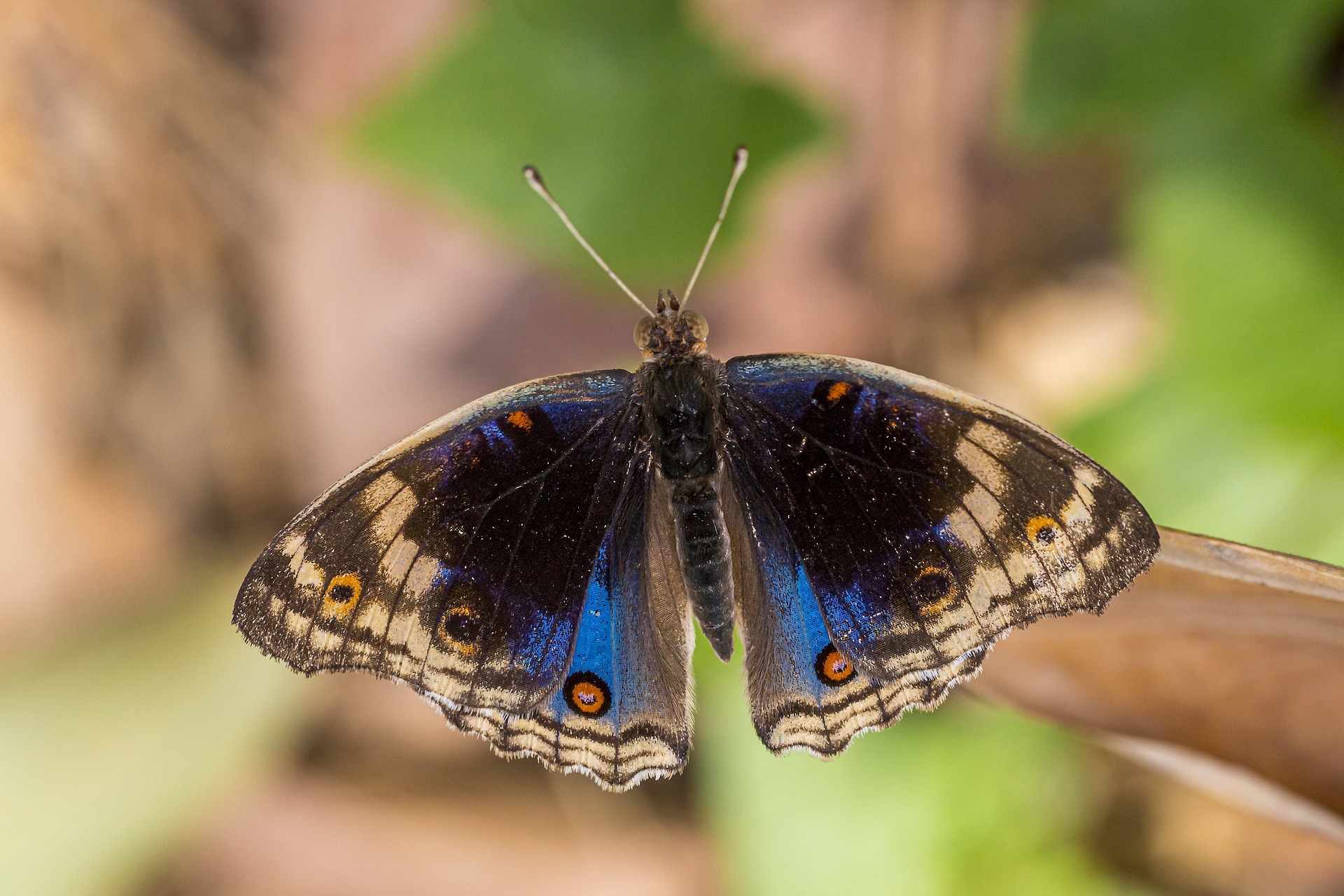The Blue Pansy (Junonia orithya), also known as the Blue Argus, is a butterfly species belonging to the family Nymphalidae. It is known for its vibrant and striking coloration, making it a favorite among butterfly enthusiasts. Here’s an overview of the Blue Pansy:
Appearance:
- Wingspan: The Blue Pansy has a wingspan of approximately 55 to 70 millimeters.
- Coloration:
- Male: The male’s upper side is predominantly blue with prominent eyespots. The forewings are black with a bright blue band, and the hindwings are blue with a black margin and two orange-ringed eyespots.
- Female: The female is generally duller with more brown and blue shades, and also features prominent eyespots on both the forewings and hindwings.
- Underside: The underside of the wings is a mottled brown and grey, which provides camouflage when the butterfly is at rest.
Habitat:
- Preferred Habitats: The Blue Pansy thrives in open areas such as grasslands, gardens, parks, and agricultural fields. It is also found in forest clearings and edges.
- Geographic Range: This species is widely distributed across South Asia, Southeast Asia, Australia, and parts of Africa.
Behavior:
- Feeding: The Blue Pansy feeds on nectar from a variety of flowering plants, including lantanas, marigolds, and other garden flowers.
- Basking: These butterflies are often seen basking in the sun with their wings spread open. They prefer sunny spots where they can regulate their body temperature.
- Flight Pattern: The Blue Pansy has a rapid and erratic flight pattern, often flying close to the ground and making quick, darting movements.
Life Cycle:
- Eggs: Females lay eggs singly on the leaves of host plants.
- Larvae (Caterpillars): The caterpillars are dark with spines and feed on a variety of host plants, including species from the Acanthaceae, Verbenaceae, and Plantaginaceae families.
- Pupae: The pupae are brownish and blend well with their surroundings, providing camouflage.
- Adults: After emerging from the pupae, adult butterflies seek mates and continue the cycle by laying eggs.
Ecological Role:
- Pollination: As nectar feeders, Blue Pansies contribute to the pollination of various flowering plants.
- Food Source: They are part of the food web, serving as prey for birds, spiders, and other predators.
Conservation Status:
- Population: The Blue Pansy is not considered threatened and has a stable population across most of its range. It is commonly found in suitable habitats.
- Threats: Habitat destruction and pesticide use can negatively impact local populations, although the species is relatively adaptable.
Interesting Facts:
- Seasonal Variation: The Blue Pansy can exhibit seasonal variations in appearance, with individuals in the wet season generally having more vivid colors compared to those in the dry season.
- Territorial Behavior: Males are known to be territorial and often engage in aerial displays to chase away rivals.
Identification Tips:
- Bright Blue Color: The bright blue color on the upper side of the male’s wings is a key identifying feature.
- Eyespots: The prominent eyespots on both the forewings and hindwings help in distinguishing the Blue Pansy from other similar species.
- Behavior: Observing its rapid and erratic flight pattern, as well as its basking behavior, can aid in identification.
In summary, the Blue Pansy (Junonia orithya) is a visually striking and adaptable butterfly species found in various regions across South Asia, Southeast Asia, Australia, and parts of Africa. Its vibrant coloration, distinctive wing patterns, and ecological roles make it a notable and appreciated species in its range.
Visited 946 times, 5 visit(s) today
Views: 1476
Subscribe to the newsletter:
